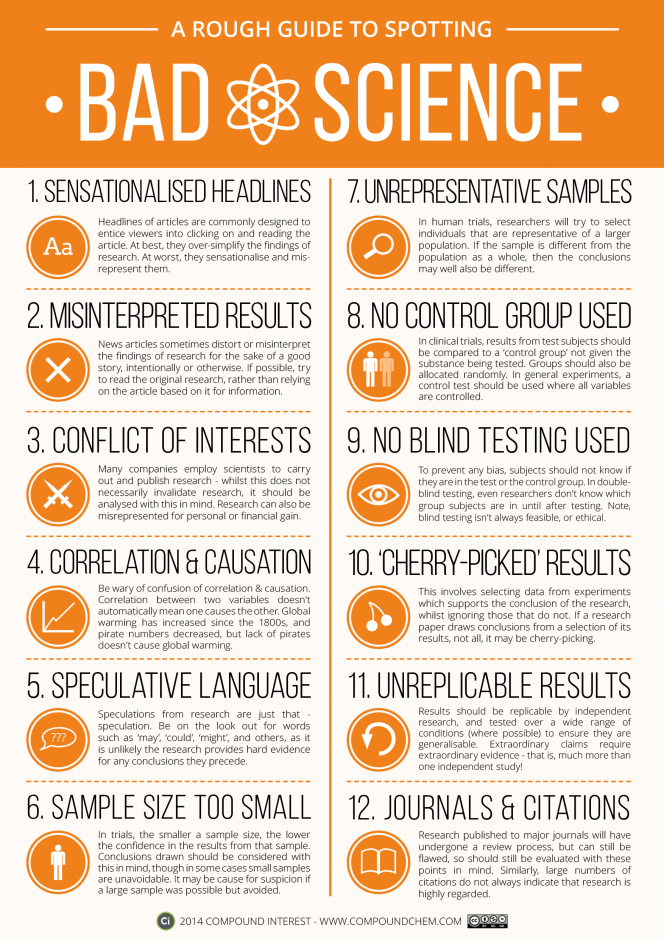What an awful title, eh. Well, you can avoid making this mistake! A recent Guardian post by Conversation UK’s Akshat Rathi (he’s popular on the blog today!) discusses some of the common mistakes in popular science writing and how best to avoid them. It’s fairly general, and by no means exhaustive, and mainly for more writing about science than science writing (er, the latter being formal publication in peer-reviewed journal, I guess).
But a more interesting recent find was a wonderful paper by Kaj Sand-Jensen from 2007 entitled ‘How to write consistently boring scientific literature‘, all about, well, you guessed it, avoiding some common pitfalls when writing science articles. So in true Buzzfeed style, here are the top 10 tips of how to be a terrible science writer, with some personal comments after.
- Avoid focus – What were we talking about again? Precision is key. Pick your topic, and stick to it. Tangents get you nowhere and only serve to remove weight from the main punch of your story. Also, many smaller papers are better than fewer large ones these days (more citations!)
- Avoid originality and personality – Probably one of the greatest flaws with mainstream science writing is the lack of any sort of personality. Just blunt raw observations and facts, goodness it can be boring reading at times, and that’s palaeontology! Actually, when was the last time anyone of you read a paper where you felt the excitement and enthusiasm of an author being conveyed?
- Write long contributions – Short papers can often pack quite a punch – look at Nature and Science for example. Although often they can be the opposite and any semblance of a decent scientific discovery is obfuscated by jargon and inane text reductions.
- Remove most implications from every speculation – Speculation is fine, within reason. Why not explore the possible paths your research implies? As long as it’s clear precisely what your evidence supports and to what degree, speculate away! That’s called creativity, and god knows science could do without stifling it.
- Leave out illustrations, particularly good ones – A picture tells 1000 words. Enough said.
- Omit necessary steps of reasoning – I’m actually quite bad at this, and it’s quite a natural thing to get wrong as a younger scientist. Often, we might be sort of drawn into allowing readers of our articles to fill in bits of the puzzle: we present the evidence, and explain our conclusions we draw from them, but can often omit the process by which we did this, an important step.
- Use many abbreviations and technical terms – OK, this is where I’m torn – the use of jargon. I believe the power of words lies in their precision. When communicating research to an audience of your peers, why not use the most precise language possible? And when communicating to non-specialist audiences, why change this where the automatic implication is ‘you are not part of our circle and could never understand this’ – why not include techy language, in an engaging and informing manner whereby your audience actually learn new words and the meanings that they imply. Language forms a core part of education, and shouldn’t be so easily reduced or dismissed. Of course, one has to be careful with this approach that you don’t convey arrogance by using a specific form of language, or seem dismissive of the level of understanding of an audience. Thin line to tread, but use of techy language in the right way can be quite powerful.
- Suppress humor and flowery language – Scientists are some of the most witty people out there, in a geeky sort of way. Why remove that from papers? Let thy weird species names, and terrible puns flow in papers. Woe betide the day when scientists are portrayed as normal human beings..
- Degrade species and biology to statistical elements – Don’t forget to always bring back the context of your statistical analyses in to their real world meaning. What does your correlation mean, your p-values and all that jazz? Bring it back to nature and observation.
- Quote numerous papers for self-evident statements – A fine line again – what is well-established knowledge, and what needs a citation to back up a statement? This again depends on your audience, and I imagine a great deal of experience. One style will certainly not suit all.
Note that my advice about avoiding common mistakes and learning how to write better about science is to get yo’ ass out there and do it! You will get better with time and develop your own style, but not if you don’t give it a shot and practice 🙂
That’s it for this post.


Lorna Steel
In regard to number 8- humour. I like to use terrible puns or other silliness in the title of papers / presentations, if possible. But recently it has been film titles. Last year I published ‘Fight Club’ (about an extinct flightless bird with a club-like weapon in the wing skeleton) and this year, ‘Bone Collectors’ (about scientific excavations in caves, where the main objective was to collect bones, obviously!). But I am stuck for the next one. It’s a comparison of bone growth rates in two extinct birds. Oh I got one- ‘Need for Speed’. That’ll do.
Soudi
The bitter reality behind scientific writing 😉